Not every snake is out to bite you. Some just want to soak up the sun, slither through the grass, and be left alone. The problem? Their looks don’t always help their case. With sharp patterns, flicking tongues, and intense eyes, they can seem a lot scarier than they really are. But many of these so-called “dangerous” snakes are shy, harmless, and more scared of you than you are of them. Learning which ones to respect—and which ones to stop fearing—might just change how you see these misunderstood reptiles.
Corn Snake
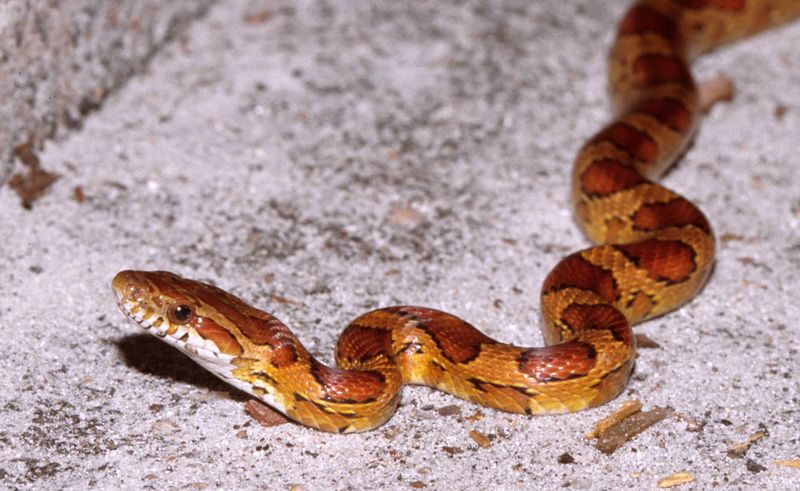
Corn snakes, with their vibrant orange and red scales, are often mistaken for venomous species. However, these non-venomous reptiles are harmless to humans. They possess a calm temperament, making them popular pets.
Native to the southeastern United States, corn snakes play a vital role in controlling rodent populations. Their striking appearance is deceiving, as they are known for their docile nature.
With their easygoing personality and adaptability to captivity, corn snakes are a favorite amongst snake enthusiasts. Their presence in the wild is also essential for maintaining ecological balance.
Milk Snake
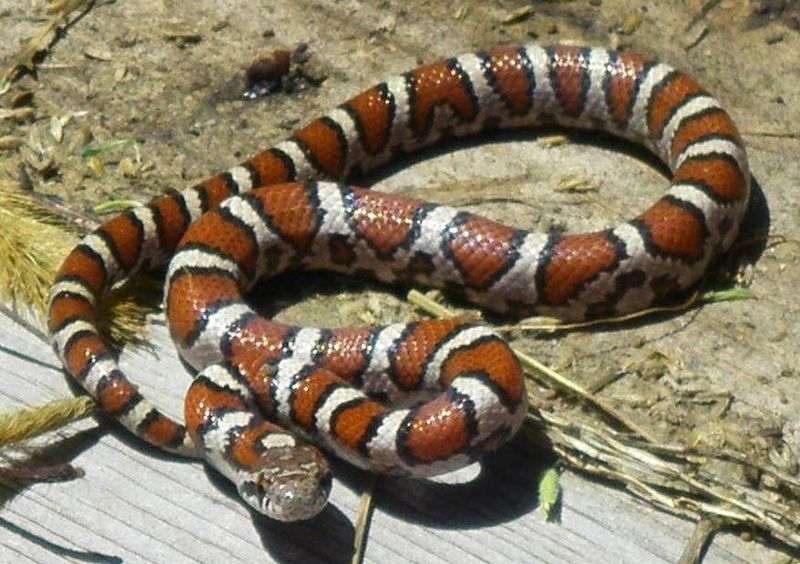
With its striking red, black, and white banding, the milk snake is often mistaken for the venomous coral snake. This mimicry helps it avoid predators. Despite its fearsome appearance, the milk snake is completely harmless to humans.
Inhabiting regions across North and Central America, these snakes thrive in various environments, from forests to fields. They are known for their reclusive nature and are seldom seen by humans.
Milk snakes play an important role in controlling pest populations, as they feed on rodents and insects. Their quirky charm makes them a delightful discovery in the wild.
Ball Python
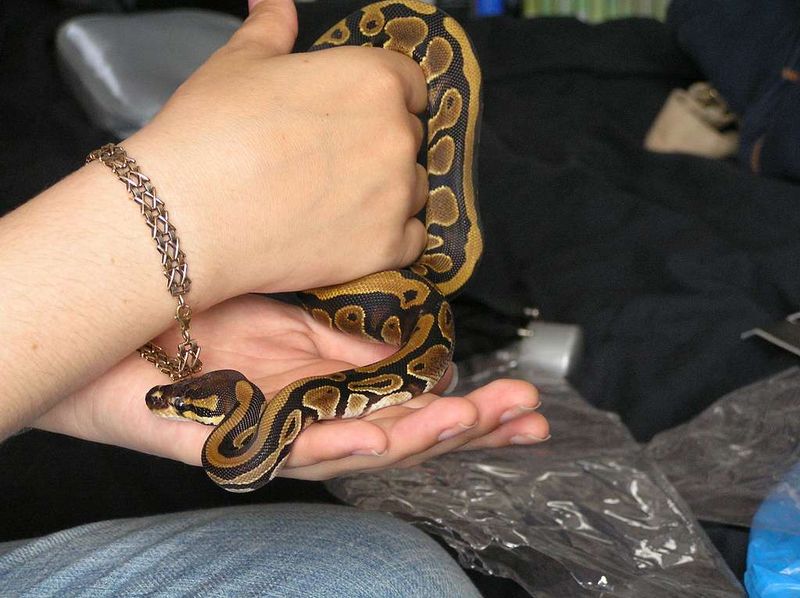
Ball pythons are renowned for their gentle nature and distinctive curling behavior when threatened. Native to West and Central Africa, they are a favorite in the pet trade due to their manageable size and calm demeanor.
These snakes are nocturnal, spending most of their time hidden in burrows or underbrush. Their diet primarily consists of small mammals.
Ball pythons’ striking patterns and ease of care make them ideal pets for beginners. Their presence in the wild is crucial for controlling rodent populations, demonstrating their ecological importance.
Green Tree Python
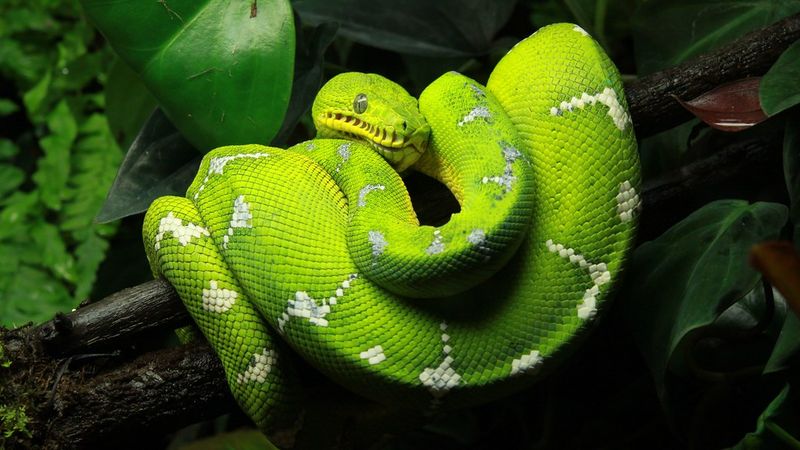
The green tree python, with its mesmerizing emerald hue, inhabits the rainforests of Australia and New Guinea. Despite its intimidating appearance, it is non-venomous and poses no threat to humans.
These arboreal snakes spend their days coiled around branches, blending seamlessly with the foliage. Their diet consists mainly of small mammals and birds.
Admired for their striking beauty, green tree pythons are popular in the exotic pet trade. Their unique adaptations to arboreal life make them a fascinating species to observe.
Garter Snake
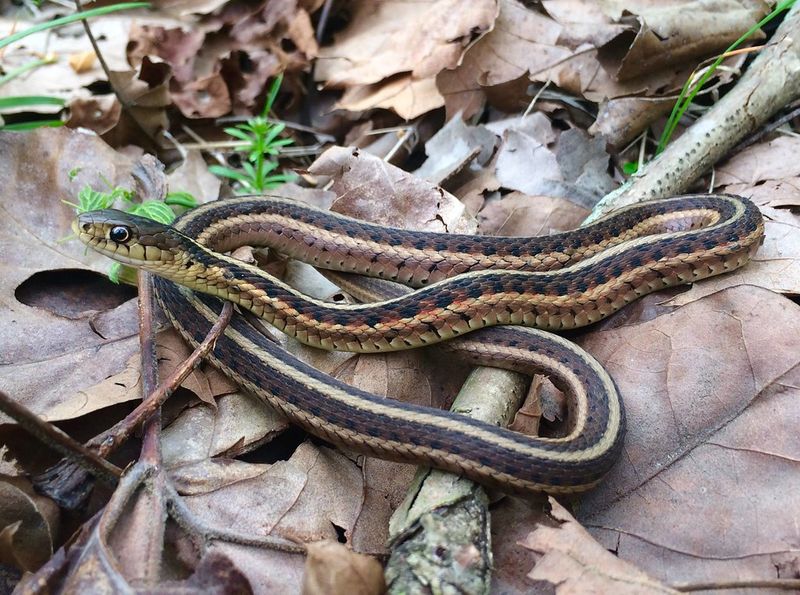
Garter snakes are ubiquitous across North America, often found in gardens and meadows. Their slender bodies and longitudinal stripes make them easily recognizable.
Though often feared, garter snakes are harmless and beneficial, as they control pest populations by feeding on insects, amphibians, and small rodents.
Their adaptability to various habitats ensures they thrive in both wild and urban environments. Garter snakes’ presence in gardens is a sign of a healthy ecosystem, as they help manage pest populations naturally.
Rosy Boa
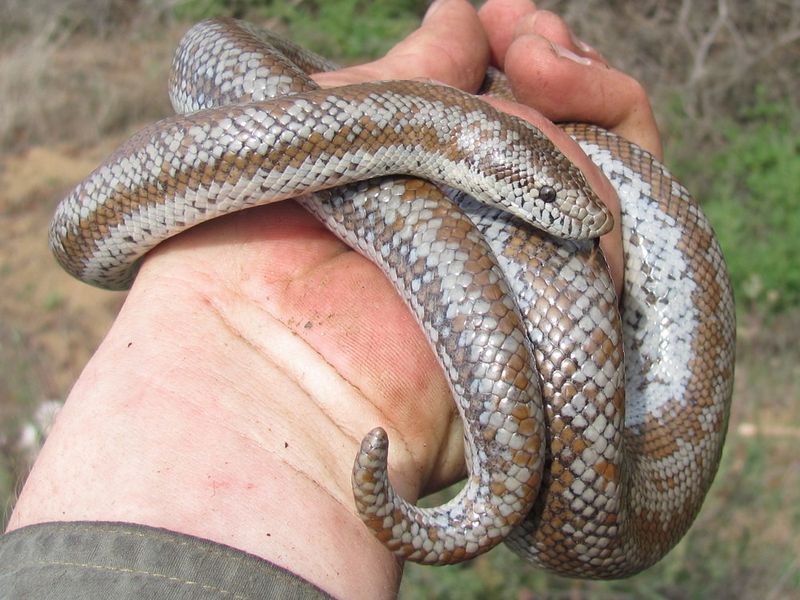
The rosy boa, with its soft pink and gray stripes, exudes a gentle charm. Native to the southwestern United States and northern Mexico, this snake is renowned for its docile nature.
Rosy boas prefer arid, rocky environments, where they find shelter and prey on small mammals. Their slow movements and placid demeanor make them ideal for handling.
As a popular choice among snake enthusiasts, rosy boas are appreciated for their ease of care and gentle personalities. They play a role in the ecosystem by controlling small rodent populations.
Eastern Hognose Snake

The eastern hognose snake is famous for its dramatic defensive displays, which include flattening its neck and playing dead. This theatrical behavior is purely a bluff, as the snake is non-venomous.
Found in sandy woodlands and fields across eastern North America, hognose snakes are shy and elusive. They primarily feed on amphibians, particularly toads.
Their unique appearance and behavior make them fascinating subjects for herpetologists and nature enthusiasts. Despite their fearsome reputation, hognose snakes are harmless and play a key role in controlling amphibian populations.
Ringneck Snake
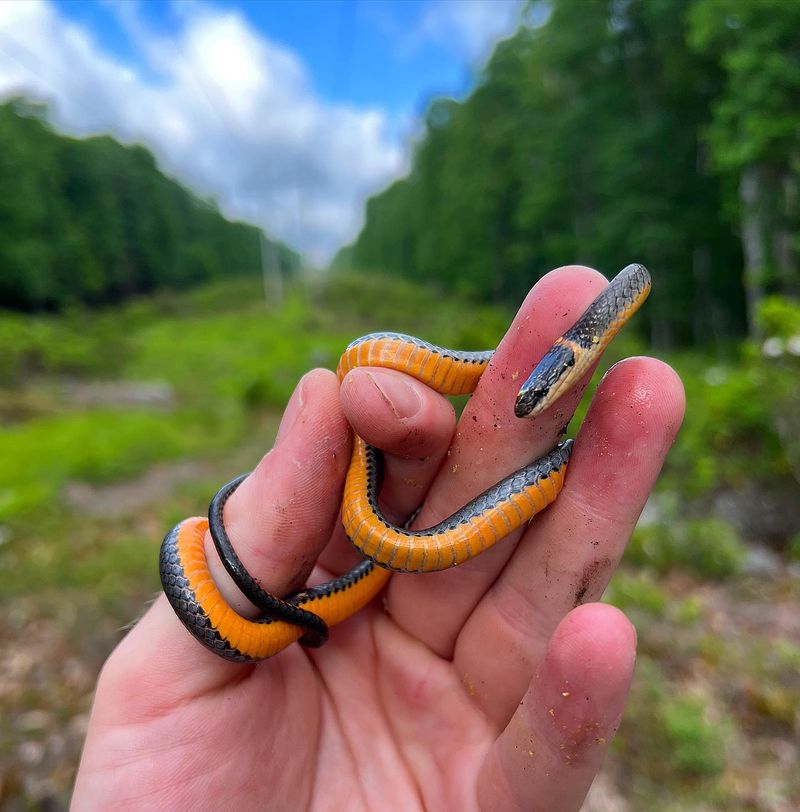
Ringneck snakes are small, with a distinctive yellow or orange ring around their necks. Their secretive nature means they are rarely seen, but they are widespread across North America.
These snakes prefer moist habitats like woodlands and grasslands. Their diet consists of small invertebrates, such as worms and slugs.
With their vibrant markings and reclusive behavior, ringneck snakes are a hidden gem in the snake world. They play an important role in maintaining the balance of invertebrate populations in their habitats.
California Kingsnake
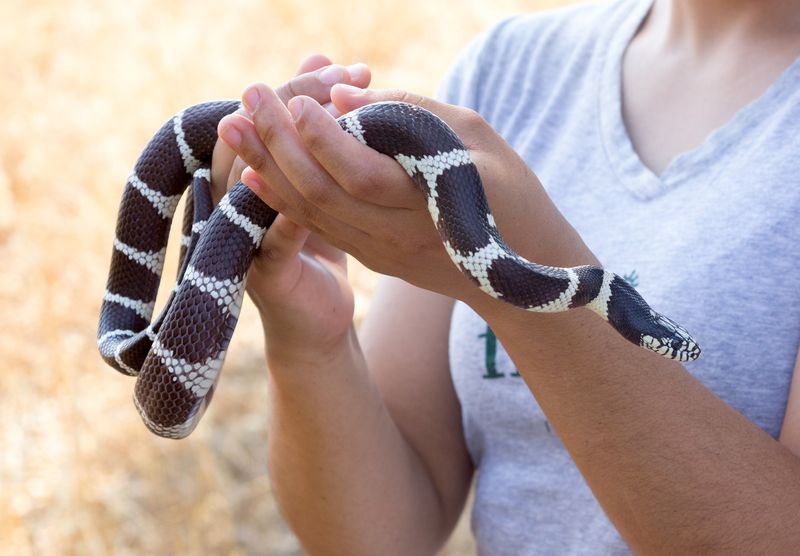
California kingsnakes are known for their bold black and white banding, which makes them easily recognizable. Despite their fierce appearance, they are harmless to humans.
These adaptable snakes inhabit diverse environments across the western United States. They are versatile predators, feeding on a variety of prey, including other snakes.
Their immunity to venom allows them to prey on rattlesnakes, making them valuable allies in controlling venomous snake populations. California kingsnakes are admired for their striking patterns and adaptability both in the wild and captivity.
Banded Krait

The banded krait, with its dramatic black and white bands, is often feared due to its venomous relatives. However, this snake is reclusive and rarely poses a threat to humans.
Inhabiting forests and grasslands in Southeast Asia, banded kraits are nocturnal and elusive. They primarily feed on other snakes and small reptiles.
While they possess venom, banded kraits are non-aggressive and avoid human contact. Their striking appearance makes them a fascinating yet misunderstood member of the snake world.
Childrens Python
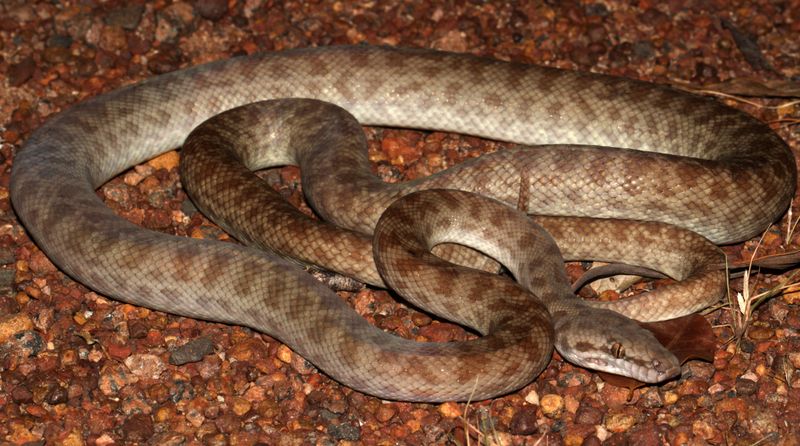
Children’s pythons, named after naturalist John George Children, are small and gentle snakes native to Australia. Their smooth brown scales and manageable size make them popular pets.
These pythons thrive in a variety of habitats, including forests and grasslands. They have a calm disposition, which makes them ideal for handling.
In captivity, children’s pythons are known for their ease of care and adaptability. They contribute to controlling small mammal populations in the wild, highlighting their ecological importance.
Rubber Boa
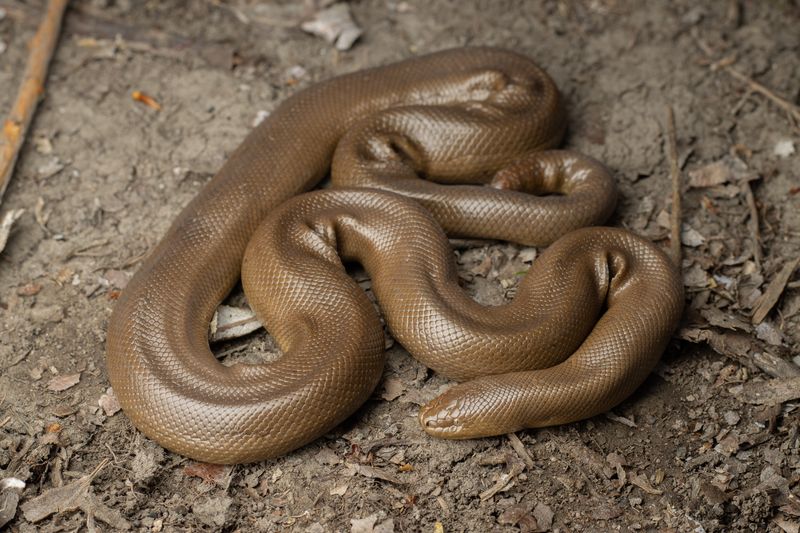
Rubber boas, with their smooth, shiny skin and blunt tails, are often mistaken for earthworms. These gentle snakes are native to North America, particularly the western United States.
Preferring cool, forested environments, rubber boas are adept at burrowing and navigating through leaf litter. They primarily feed on small mammals and bird eggs.
Their docile nature and unique appearance make them intriguing subjects for reptile enthusiasts. Rubber boas play a crucial role in controlling small mammal populations in their habitats.
Western Ribbon Snake
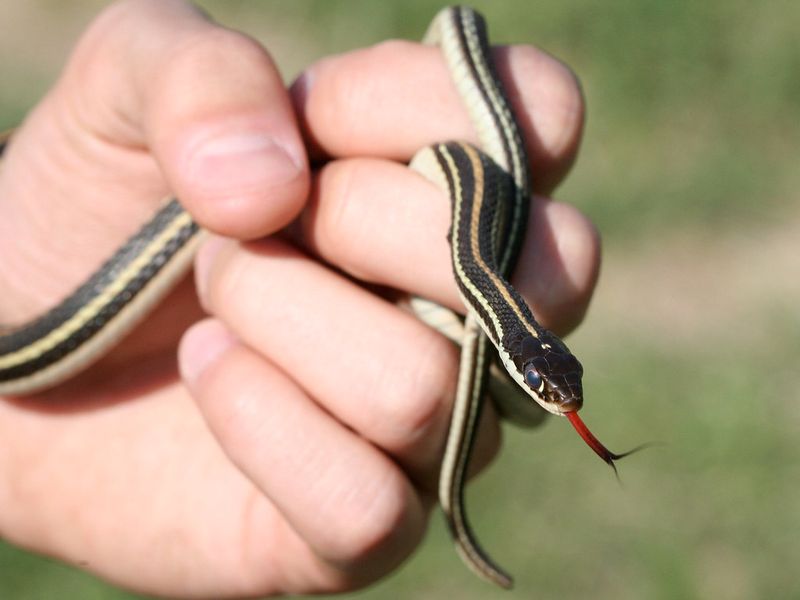
The western ribbon snake, with its slender body and striking yellow stripes, is a common sight in marshes and wetlands of North America. Despite its vibrant appearance, it is harmless.
These snakes are fast and agile, primarily feeding on amphibians and small fish. Their presence is an indicator of a healthy wetland ecosystem.
Western ribbon snakes are admired for their speed and grace, making them fascinating to observe in their natural habitats. They contribute to maintaining the balance of aquatic ecosystems by managing amphibian populations.
Burmese Python
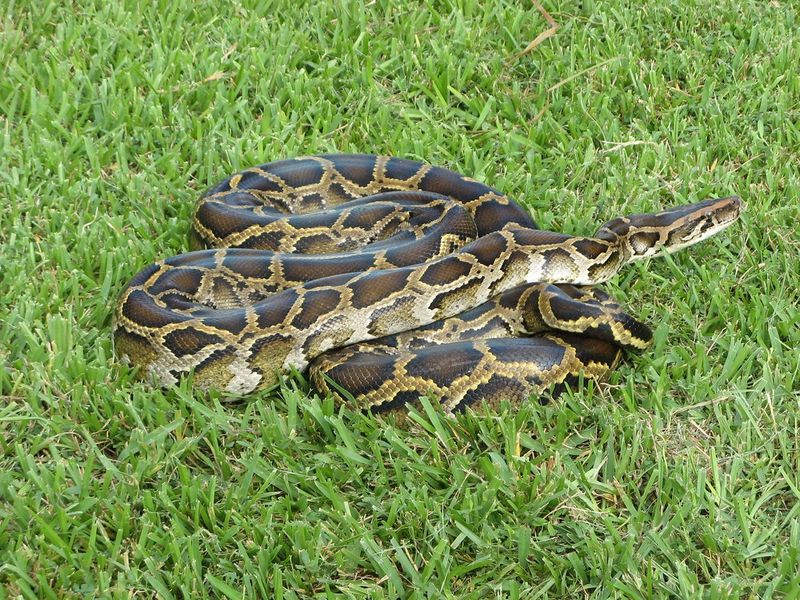
Burmese pythons, renowned for their impressive size, inhabit the jungles and swamps of Southeast Asia. Despite their intimidating presence, they are non-venomous and largely avoid human contact.
These powerful constrictors prey on large mammals and birds, playing a crucial role in their ecosystems. Their elaborate patterns make them a subject of fascination.
In captivity, Burmese pythons require experienced handlers due to their size. However, their placid temperament and striking appearance make them popular among serious snake enthusiasts.

